New! Time Out Eat Street launches at Between the Bridges
Between the Bridges is teaming up with Time Out to bring a mini street food market to South Bank...
On 8 May 2025 the world marks 80 years since VE Day (Victory in Europe Day), the day that marked the end of World War II in Europe following Germany's formal surrender.
Throughout the week of the anniversary, across the UK a variety of special commemorative events will be taking place.
The most prominent VE Day 80 event taking place in London is a military procession along Whitehall and the Mall on the Monday 5 May bank holiday, which will be accompanied by an impressive military flypast (weather permitting) featuring the Red Arrows.
South Bank is not within the 5 May parade routes for the VE Day celebrations (pictured below).
However, Waterloo Station is a key transport hub in close proximity to the start of the procession, so visitors can expect the South Bank and its main Tube and train connections to be much busier than usual.
The 5 May parade events start at Parliament Square at 12pm, culminating in a flypast over Buckingham Palace at approximately 1:45pm.
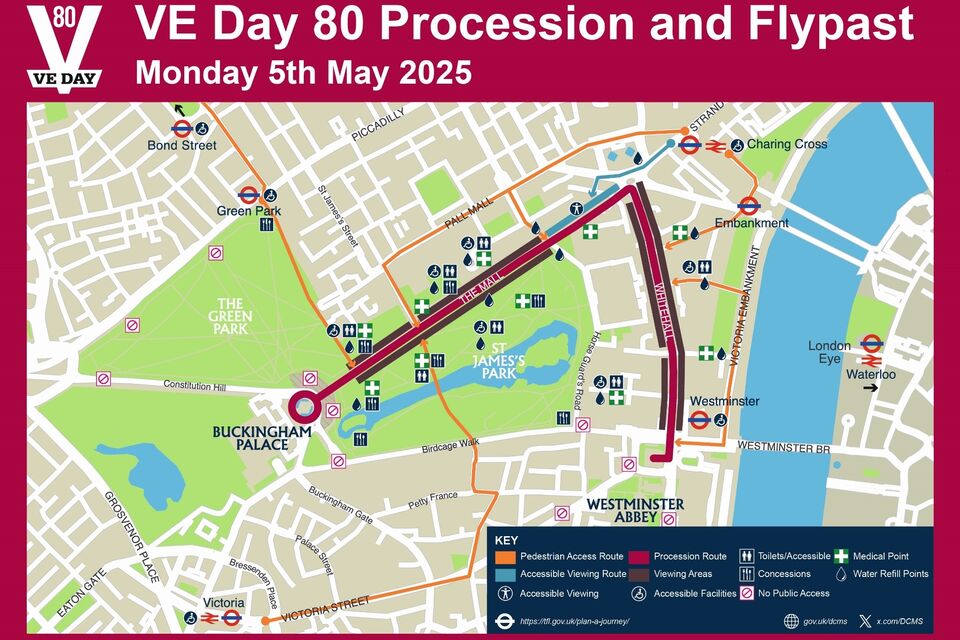
The military flypast is scheduled to fly directly over The Mall (see map above) in formation at 1:45pm. The procession of airplanes includes the famous Red Arrows and impressive Royal Air Force crafts such as Typhoons, A400M Atlas, C-17 Globemaster, Rivet Joint, and Poseidon, as well as the historic Lancaster Bomber.
Flying in from East Anglia, Essex and the North Sea, the planes are expected to be visible over central London between 1.25pm and 2pm.
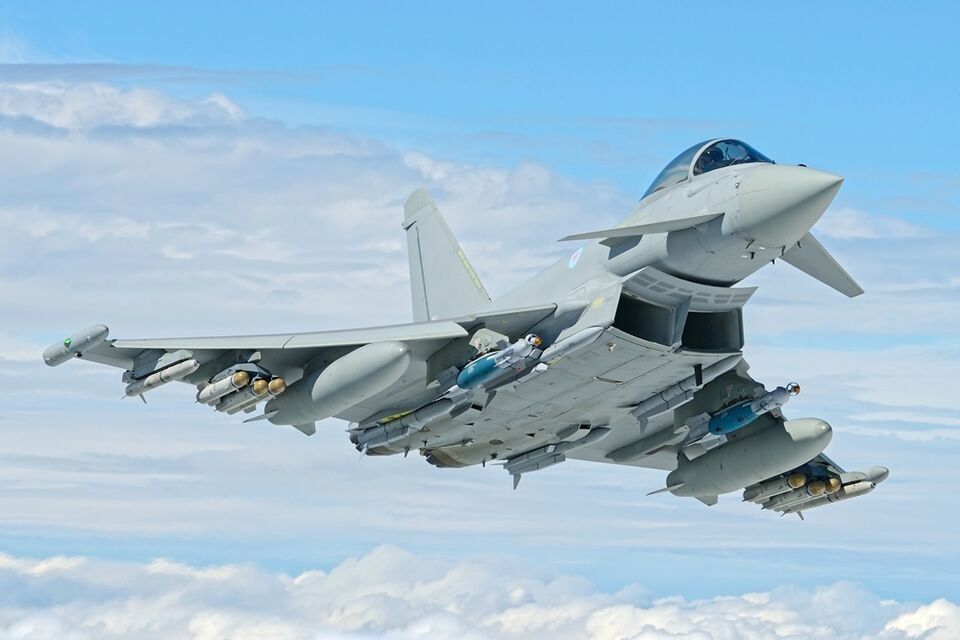
This week gallery@oxo at Oxo Tower Wharf hosts an exhibition presented by the British Red Cross. Titled Brushstrokes from the Front Lines, it showcases the work of the war artist and volunteer nurse Doris Zinkeisen.
Working with the Red Cross she was commissioned as a war artist to record what she saw for the British public. She was the first painter to enter the Bergen-Belsen concentration camp after it was liberated from the Nazis by the British Army in 1945. A dedicated humanitarian, Doris also worked as a volunteer army nurse, caring for returning soldiers injured on the front during World War I and for those wounded in the Blitz during World War II.
Images from modern-day crises are also on show in this exhibition, alongside Zinkeisen’s portrayals from the Second World War, inviting visitors to reflect on the power of humanity and compassion in the worst of times.
The exhibition is open from 8-11 May, 11am–6pm. Entrance is free.
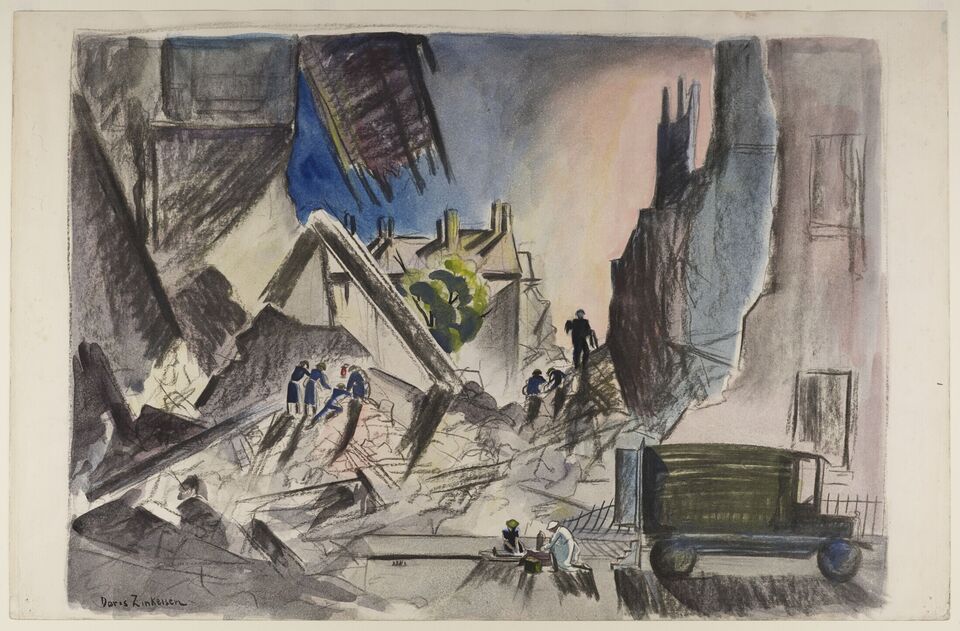
Pre-war South Bank was home to numerous warehouses and light industrial buildings and consequently, the area sustained considerable damage during the Blitz. Some buildings – such as Waterloo Station and St John’s Waterloo Church - were damaged and repaired, while many others were deemed unsalvageable and were eventually demolished.
Much of the South Bank that we see today owes its origins to the hopeful visions of the immediate post-War generation who sought to build something completely new from the rubble. Shortly after the end of the war, South Bank was chosen as the site for the 1951 Festival of Britain, an event that sought to look to the future, celebrating the ingenuity and eclecticism of British culture and the many exciting new technological innovations that were set to transform everyday British life.
The lasting legacy of the festival was the Royal Festival Hall. The only surviving building from the festival, it now forms the centre of the world-famous Southbank Centre complex.
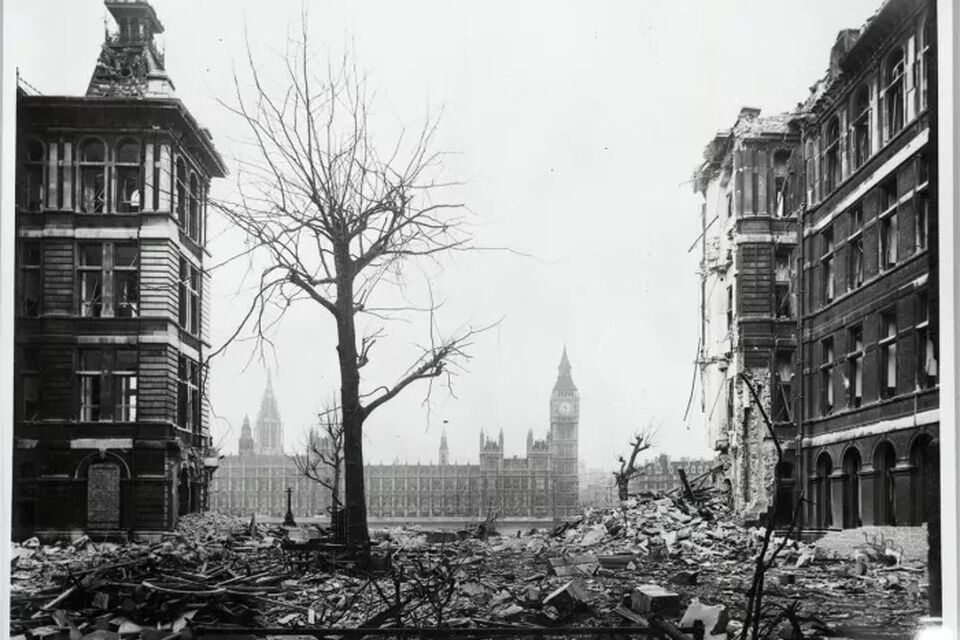
There are various plaques and memorials dotted around the South Bank that commemorate those who lost their lives during World War II. These include:
On the Albert Embankment close to Lambeth Bridge stands a statue of the brave British-French spy Violette Szabo, a posthumous recipient of the George Cross.
On her second mission into occupied France, Szabo and three fellow special operations operatives were parachuted into Normandy in June 1944 immediately following the D-Day landings. The team was sent to work with the French resistance to sabotage the communications network of the occupying German army and help lay the path for the liberation of France.
Unfortunately, during the mission, Szabo was captured by German forces. Following her capture, she was interrogated and tortured by the Nazis, before being deported to the Ravensbrück concentration camp in Germany, where she was executed in February 1945.
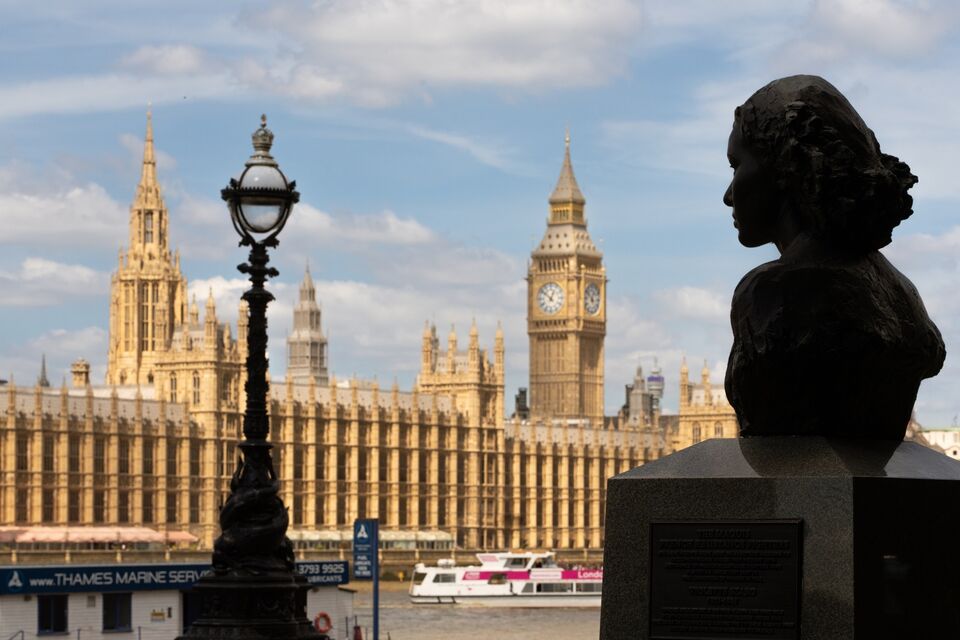
At the Victory Arch entrance to Waterloo Station a plaque memorialises the 626 men of the Southern Railway who died in World War II.
In the same arch there is also a plaque commemorating the railway employees who gave their lives in the D-Day landings on 6th June 1944.
The St Thomas’ Hospital next to Westminster Bridge sustained significant damage when the hospital was bombed on 9 and 10 September 1940 during the Blitz. Ten doctors and nurses were killed during the bombardment and are remembered on a plaque located in the East Wing of the hospital.
The Florence Nightingale Museum (located within the hospital) also contains items that were used by hospital staff during the Blitz. You can find more photos of the damage sustained by the hospital during the Blitz here.